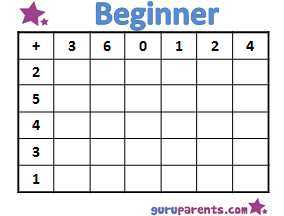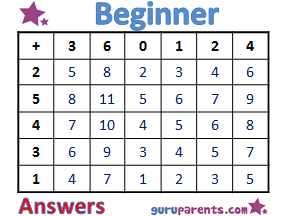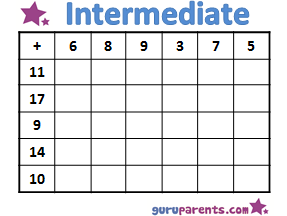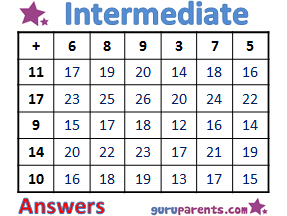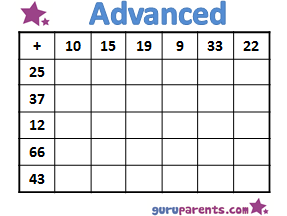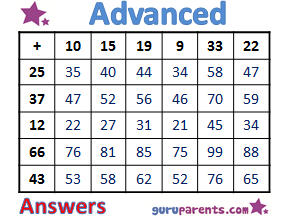The Worksheets
Click here to download all 30 question worksheets
Click here to download all 30 answer worksheets
Introduction
Once a child understands how to add up, they are ready for some addition worksheets.
We encourage you to keep the following three goals in mind:
1. Fun: Working with numbers should be challenging and enjoyable! If the worksheets start becoming a chore, look for ways to liven things up (see “Suggestions For Use” below).
2. Speed: The more sums they do, the faster your child will get – and this will be a big advantage for them throughout school and beyond.
3. Number familiarity: Our addition worksheets will help your child develop their numerical proficiency. For example, if a child develops the instinctive knowledge that 8 + 7 = 15, they will soon realize they also know that 80 + 70 = 150, thereby making a sum such as 84 + 73 very simple for them.
Our Free Worksheets
Each of our 30 addition worksheets contains 30 questions in a 5 by 6 grid (making 900 questions in total). A completed answer sheet is included for every worksheet. We have divided the worksheets into three groups:
1. Beginner: Simple addition of a one-digit number with another one-digit number. (Click here for answer sheets).
2. Intermediate: Addition of a two-digit number with a one-digit number as well as simple examples of addition of 2 two-digit numbers. (Click here for answer sheets).
3. Advanced: Challenging two-digit number addition and some three-digit number addition. The final two worksheets (29 and 30) are especially challenging. (Click here for answer sheets).
If your child is not quite ready for these worksheets yet, you may find our addition flash cards useful.
Suggestions For Use
For parents
* Print off two copies of the same worksheet, for you and your child to complete separately. Then, swap sheets and mark each other’s work using the answer sheet. Discuss any that your child (or you!) gets wrong.
* Pick a worksheet and see how quickly your child and other family members and friends can complete it. Keep a record on the fridge of the fastest time achieved by each person. This will inspire some children to have several attempts in order to get the fastest time – and this sort of repetition is ideal.
* Complete a worksheet yourself, deliberately making several mistakes. See if your child can correctly identify all of the errors. Then, swap roles – many children will relish the task of trying to see if they can fool you, (and of course, all the while they will be improving at addition!)
For teachers/tutors
* Have your students complete a worksheet at the start of each lesson, against the clock.
* Introduce some healthy competition. Divide the class into teams and give them only a very short time to complete as much of a worksheet as they can. Read out the correct answers and get the children to mark their work and then have a “leader” of each group read out all of their team’s scores (this avoids embarrassing children who have performed poorly).
Write the scores of each team on the board and then, together with the class, add up the scores to find the winning team. Ask for the name of the best performer in each team and appoint them as team leader for the next time (this gives recognition for the highest achievers).
Final Word
Children who are able to add up one and two-digit numbers in their head perform better at math, are more confident at it and enjoy it more. And the only way to develop this ability is good old fashioned practice!
We think our addition worksheets are a fun and simple way to help your child get some of the practice they will need. We hope you enjoy them!

